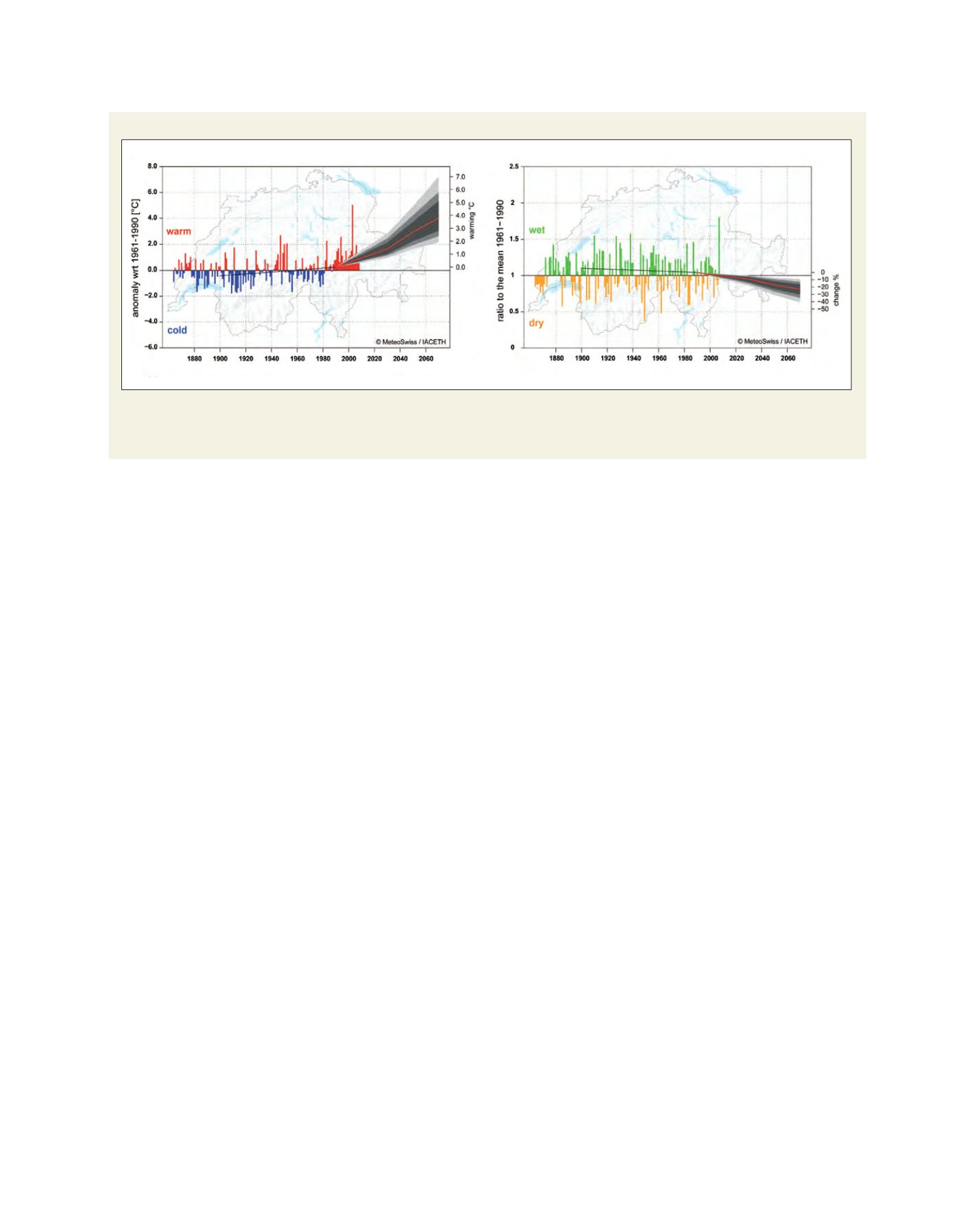

[
] 79
G
overnance
and
P
olicy
essential that the forecasts are reliable and that the underlying
uncertainties are appropriately quantified. This is a non-trivial
task which involves a series of post-processing steps and has
become a research focus of our climate service.
Concerning longer timescales, our observations clearly show
that the climate has changed over the last decades. At the same
time, climate model predictions as summarized, for example
by the Intergovernmental Panel on Climate Change, indicate
that the climate will continue to warm. While the magnitude
of climate change depends on the future development of the
global economy, technological innovation and policies, local
and regional adaptation strategies can only be formulated if
sound climate information is available, which in turn requires
an involvement of the national climate services. For example,
regional observations and projections of summer mean temper-
atures and precipitation for northern Switzerland have been
determined under the lead of the Swiss national advisory board
on climate change (OcCC, 2007).
2
However, most stakeholders
require information that is even more specific, and we have to
answer questions such as: Will there be a stronger temperature
change at higher altitudes? How does the precipitation pattern
change in a region or at a specific site? For example, the canton of
Valais or the city of Geneva. What about changes in the frequency
of extreme weather? Will there be more strong storms such as
those in December 1999, floods like in August 2005 or heat waves
as in 2003? And again – how certain are these projections?
An answer to these complex questions requires close collab-
oration with the Swiss and international climate research
community. Since 2001, our office has been an active partner in
the National Centre of Competence in Research on Climate, a
scientific network bringing together more than 100 researchers
from national partner institutions with the aim of better under-
standing the climate system by carrying out interdisciplinary
research on its variability and interactions. At the same time,
MeteoSwiss has participated in international research projects
such as EU FP6 ENSEMBLES – a largescale European research
initiative to provide objective probabilistic estimates
of uncertainty in future climate on the basis of a large
ensemble of global- and regional-scale climate model
simulations.
While the duration of such programmes and initi-
atives is usually limited, the user demand for high
quality climate information is continuously growing
and requires the establishment of a more permanent
framework to guarantee this kind of service. An
integral component of such a framework could be
provided by the Center for Climate Systems Modeling
(C2SM) located at the Swiss Federal Institute of
Technology in Zurich, which was established in
autumn 2008 by Zurich based institutions, includ-
ing MeteoSwiss. The C2SM has the potential to act
as a long-term interface between climate research on
the one hand and end-user oriented climate services
on the other, and may form an integral part in the
development of a national adaptation strategy.
Maintaining a reliable, high resolution measure-
ment network that provides high quality local and
regional climate information as well as climate change
projections is among the most challenging tasks of
our climate service. Together with our partners from
research, the economy and public sector we can help
to give answers to many climate related questions.
However, we also need to improve dialogue between
our service and stakeholders. Switzerland started
with the development of a national adaptation strat-
egy. Climate information will be the backbone of this
strategy. A constructive dialogue will help to set the
focus of our services. However, users must know the
potential and limitations of our products if they want
to achieve optimal benefits. The quantification and
communication of prediction uncertainty is one of the
key challenges in this context.
Climate projection for northern Switzerland
Source: Federal Office of Meteorology and Climatology MeteoSwiss/Institute for Atmospheric and Climate Science ETH
Observed (1864-2008) and projected (1990-2070) summer temperature (left, in °C) and precipitation anomalies (right, in per cent) for northern Switzerland
with respect to 1961-1990. The grey areas show the uncertainty range of the projection (5-95 per cent confidence), assuming that no quick measures are
implemented to reduce greenhouse gas emissions
















